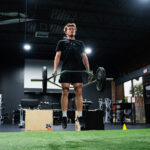Strength and Conditioning Training for Beginners
Strength and conditioning training is essential for building a strong foundation in any sport. Whether you’re an aspiring athlete or just getting started in fitness, the right training can boost your strength, increase endurance, and prevent injury. This guide walks you through the basics of strength and conditioning training for beginners.
What Is Strength and Conditioning Training?
Strength and conditioning training combines resistance training, movement mechanics, and mobility work. It’s more than lifting weights—it’s about creating a balanced body. Athletes benefit from improved strength, speed, agility, and flexibility.
This training method targets both physical performance and injury prevention. By focusing on functional movement, beginners can quickly notice improvements in daily life and sport-specific actions.
Benefits of Strength and Conditioning for New Athletes
Starting a new fitness journey can be overwhelming, but strength and conditioning training offers measurable results early on. Some key benefits include:
-
Increased muscular strength: Stronger muscles enhance performance and reduce injury risk.
-
Improved endurance: Conditioning boosts your cardiovascular system, allowing you to train longer and harder.
-
Better mobility and flexibility: Movement quality improves, helping you move more efficiently.
-
Injury prevention: Strengthening stabilizer muscles and improving joint health protect your body.
-
Mental resilience: Pushing through workouts builds discipline and mental toughness.
How to Start Strength and Conditioning Training Safely
If you’re just beginning, it’s essential to start slow and build gradually. Focus on form, not how much weight you can lift. Here’s how to approach your first few weeks:
1. Get a Movement Assessment
Before starting, get evaluated by a certified coach. They’ll identify mobility restrictions and muscle imbalances.
2. Focus on Bodyweight Movements
Mastering bodyweight movements like squats, lunges, and push-ups is critical. These form the foundation for all future exercises.
3. Learn Proper Lifting Technique
When you move to weights, focus on technique. Poor form can lead to injuries, especially in compound lifts like deadlifts or bench press.
4. Include Core Stability Work
The core is central to every movement. Incorporate planks, bird-dogs, and anti-rotation exercises for better control.
5. Mix in Conditioning
Don’t skip cardio. Interval training or low-impact exercises like cycling can enhance endurance without overloading joints.
Sample Beginner Strength and Conditioning Training Routine
Here’s a simple 3-day routine to get started:
Day 1: Full Body Strength
-
Bodyweight Squats – 3×15
-
Push-Ups – 3×10 (or incline if needed)
-
Glute Bridges – 3×15
-
Forearm Plank – 3×30 sec
-
Jump Rope – 3×30 sec
Day 2: Active Recovery + Conditioning
-
Brisk Walk or Light Jog – 20 minutes
-
Dynamic Stretching – 10 minutes
-
Core Circuit: Dead Bug, Side Plank, Supermans – 2 rounds
Day 3: Strength + Mobility
-
Goblet Squats – 3×10
-
Dumbbell Rows – 3×12
-
Step-Ups – 3×10 per leg
-
Pallof Press – 3×10 each side
-
Stretch and Foam Roll – 10 minutes
Common Mistakes to Avoid
Many beginners fall into traps that hinder progress or lead to injury. Avoid these common mistakes:
-
Skipping warm-ups: Always start with mobility and activation drills.
-
Overtraining: More isn’t better. Muscles need time to recover.
-
Neglecting form: Rushing into heavy lifting without mastering technique is risky.
-
Ignoring nutrition and sleep: Training is only one piece of the puzzle.
Finding the Right Support
Guidance from a knowledgeable coach makes a huge difference. At Next Level Athletics, our strength and conditioning programs help athletes of all levels build smart, effective routines. A supportive community and customized training can elevate your success.
Science-Backed Training
According to the National Strength and Conditioning Association (NSCA), structured strength and conditioning plans are the foundation for performance enhancement. They emphasize progressive overload, specificity, and proper recovery—critical concepts for new athletes.
Conclusion
Strength and conditioning training is the key to long-term success in any athletic or fitness journey. It lays a solid base for power, agility, and endurance. By starting with the right habits and progressing with intention, beginners can train safely and see consistent gains. Remember, building strength is a journey, not a race.


Recent Comments